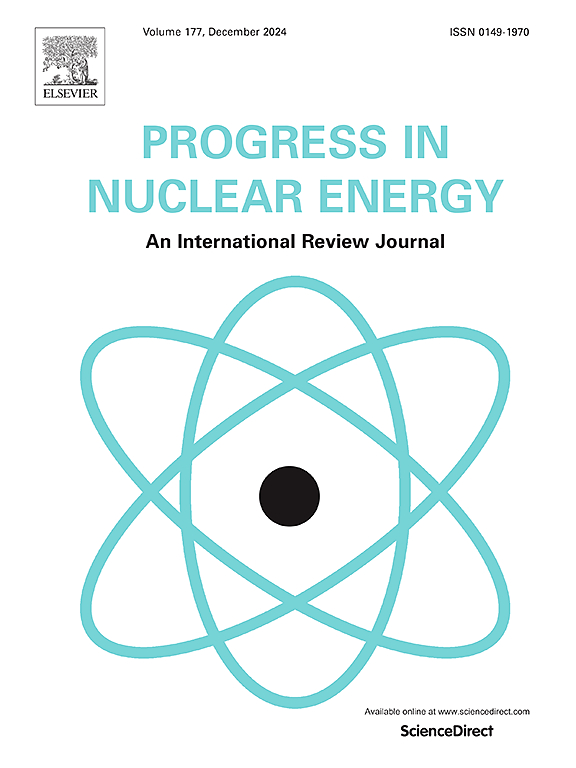Non-condensable gas accumulation and distribution due to condensation in the CIGMA facility: Implications for Fukushima Daiichi Unit 3 (1F3)
IF 3.3
3区 工程技术
Q1 NUCLEAR SCIENCE & TECHNOLOGY
引用次数: 0
Abstract
This study was motivated by previous analysis by TEPSYS, which indicated that different temperatures in the 5th and 4th floors of the reactor building (R/B) of Fukushima Daiichi Unit 3 (1F3) could significantly influence the distribution of non-condensable gases during the severe accident in 2011. Understanding this effect is crucial for assessing the risks associated with non-condensable gas accumulation in R/B, particularly considering that the hydrogen explosion in 1F3 may not have been a single-stage event but could have involved a multi-stage explosion. To investigate the distribution and transport on non-condensable gas under varying cooling conditions, an experimental study was conducted using the CIGMA facility, a large-scale test vessel with segmented sections created by partition plates, designed to replicate the structure and conditions of the R/B. Steam and helium, used as non-condensable hydrogen substituted, were continuously injected at the top of the CIGMA vessel for 10,000 s to replicate the leakage of steam and hydrogen through the shield plug. Two cooling conditions were tested: Case 1 with a cooling temperature of 50 °C, and Case 2 with a cooling temperature of 90 °C. The experiments aimed to explore how varying cooling temperatures impact helium accumulation in different regions of the R/B structure. The study found that in both cases, the highest concentration of non-condensable gases may not always be near the injection point but rather in downstream regions. In these regions, steam and non-condensable gases move downward and continue to condense, significantly enhancing the concentration of helium. Specifically, in Case 1, after 10,000 s, the helium concentration reached 65 % in the middle region (representing the 4th floor of R/B) and 45 % in the top region (representing the 5th floor of R/B). Analysis using the Shapiro ternary diagram showed that, under these conditions, the gas mixture in the middle region posed a potential detonation risk. This study provides important insights into gas distribution within a nuclear reactor building during severe accident conditions, which are crucial for developing more effective safety measures and risk mitigation strategies in nuclear reactor designs.
求助全文
约1分钟内获得全文
求助全文
来源期刊

Progress in Nuclear Energy
工程技术-核科学技术
CiteScore
5.30
自引率
14.80%
发文量
331
审稿时长
3.5 months
期刊介绍:
Progress in Nuclear Energy is an international review journal covering all aspects of nuclear science and engineering. In keeping with the maturity of nuclear power, articles on safety, siting and environmental problems are encouraged, as are those associated with economics and fuel management. However, basic physics and engineering will remain an important aspect of the editorial policy. Articles published are either of a review nature or present new material in more depth. They are aimed at researchers and technically-oriented managers working in the nuclear energy field.
Please note the following:
1) PNE seeks high quality research papers which are medium to long in length. Short research papers should be submitted to the journal Annals in Nuclear Energy.
2) PNE reserves the right to reject papers which are based solely on routine application of computer codes used to produce reactor designs or explain existing reactor phenomena. Such papers, although worthy, are best left as laboratory reports whereas Progress in Nuclear Energy seeks papers of originality, which are archival in nature, in the fields of mathematical and experimental nuclear technology, including fission, fusion (blanket physics, radiation damage), safety, materials aspects, economics, etc.
3) Review papers, which may occasionally be invited, are particularly sought by the journal in these fields.
 求助内容:
求助内容: 应助结果提醒方式:
应助结果提醒方式:


